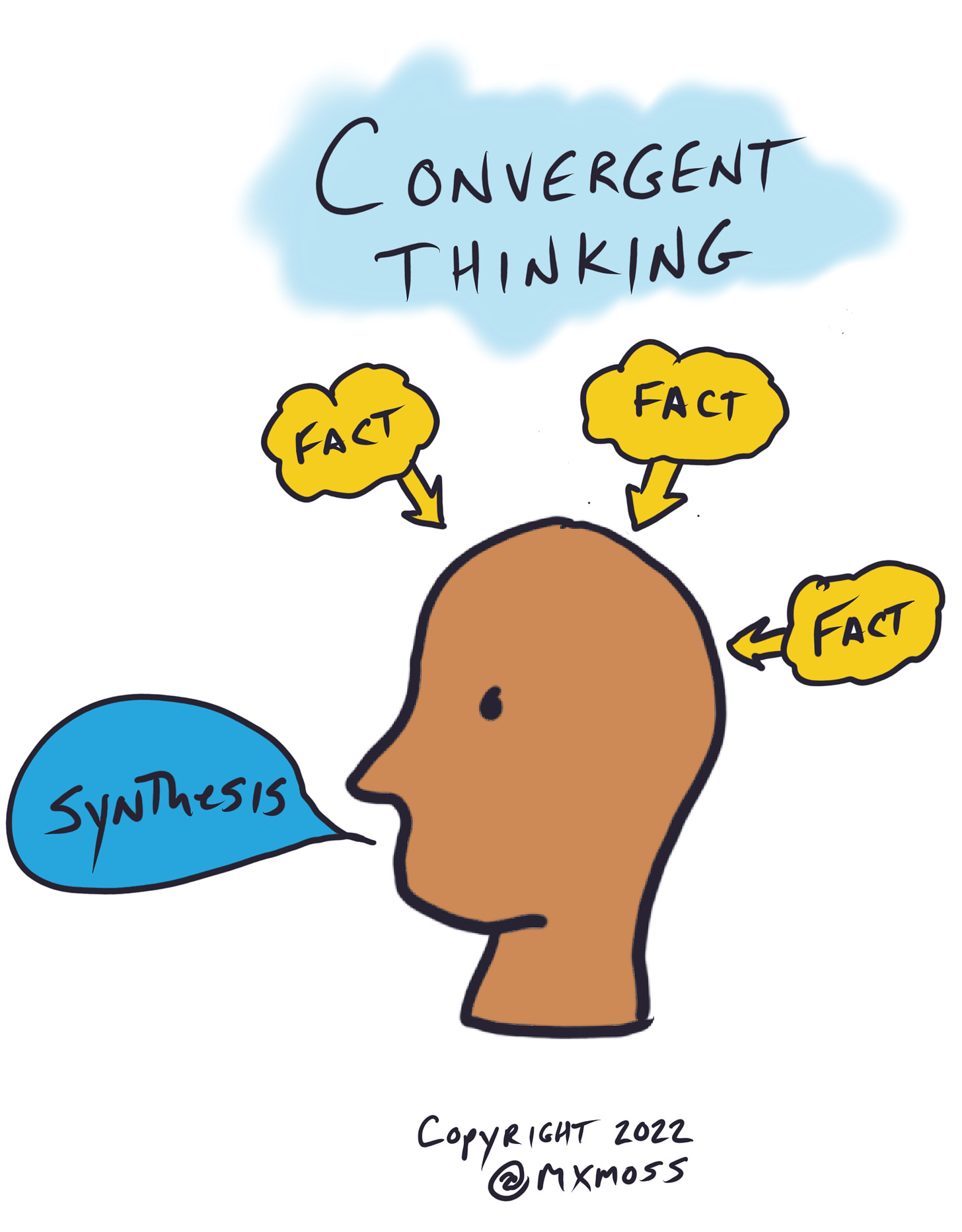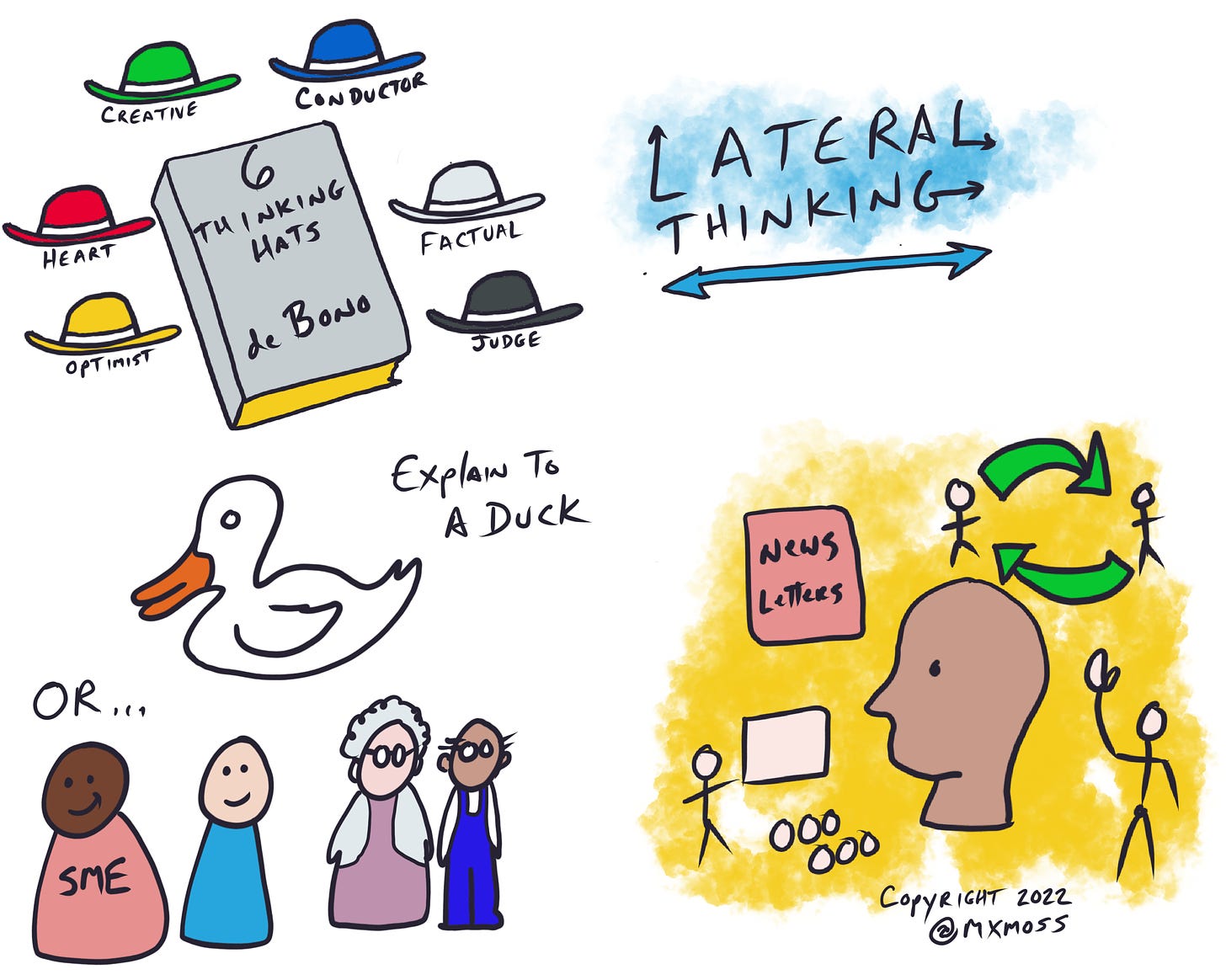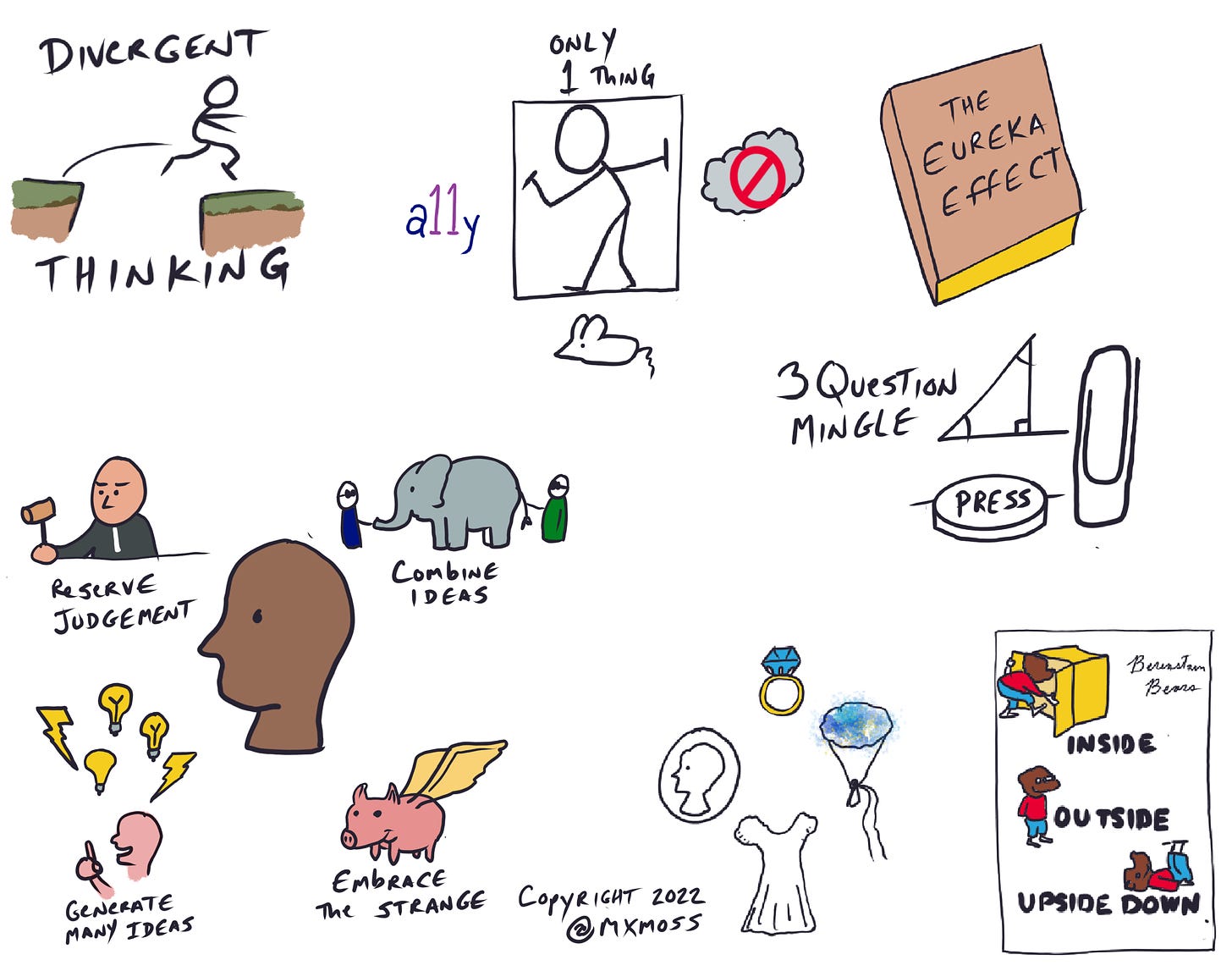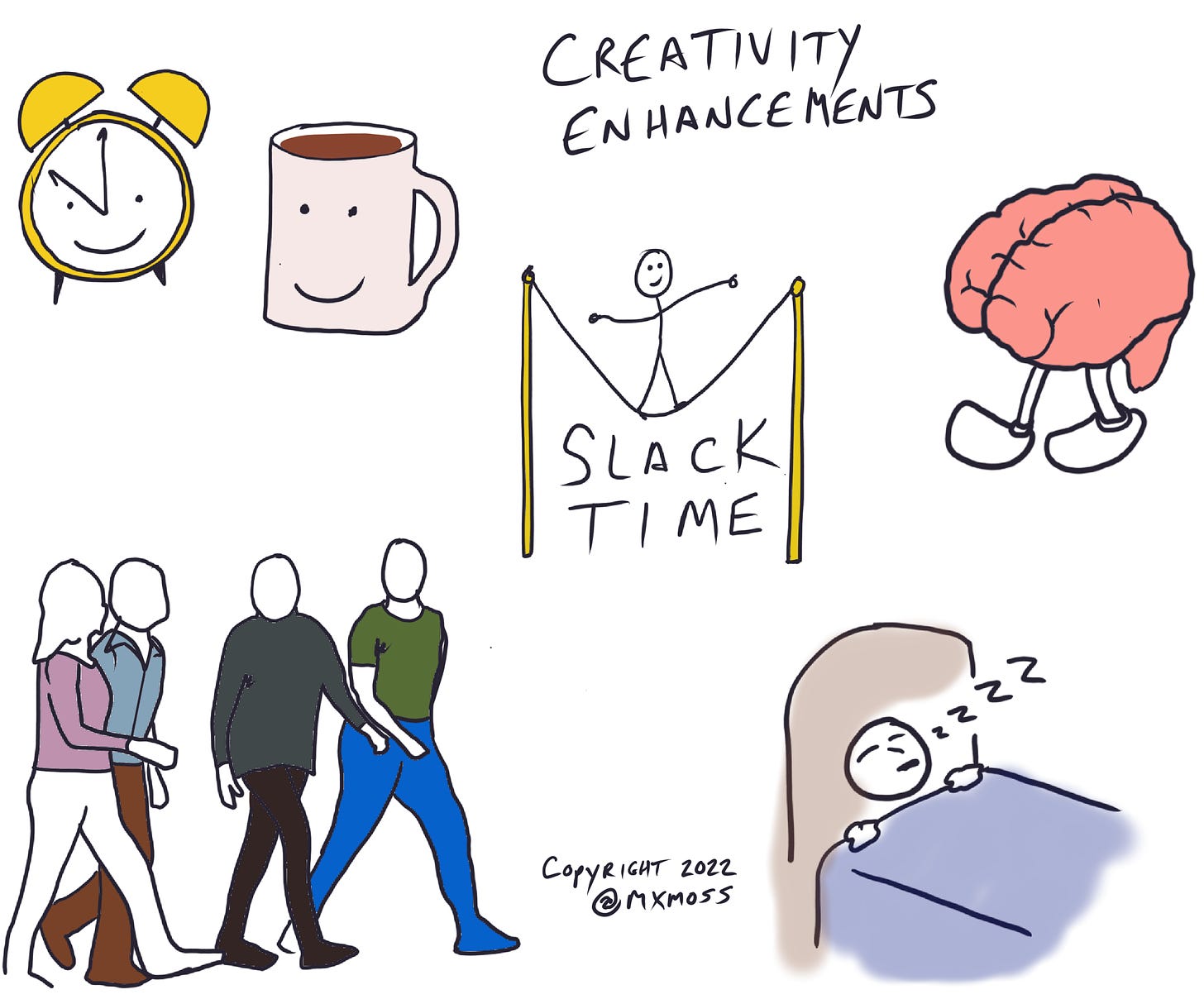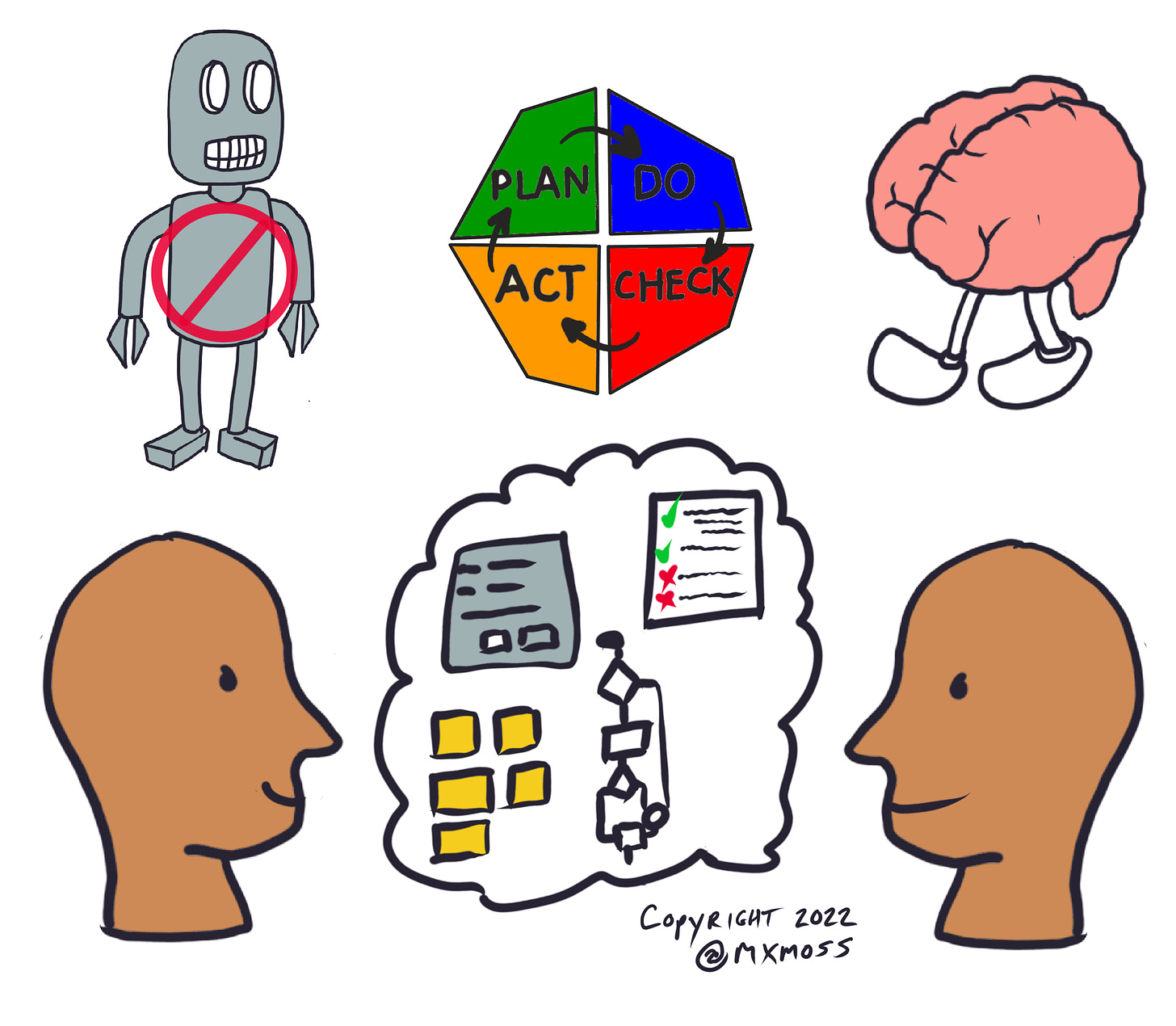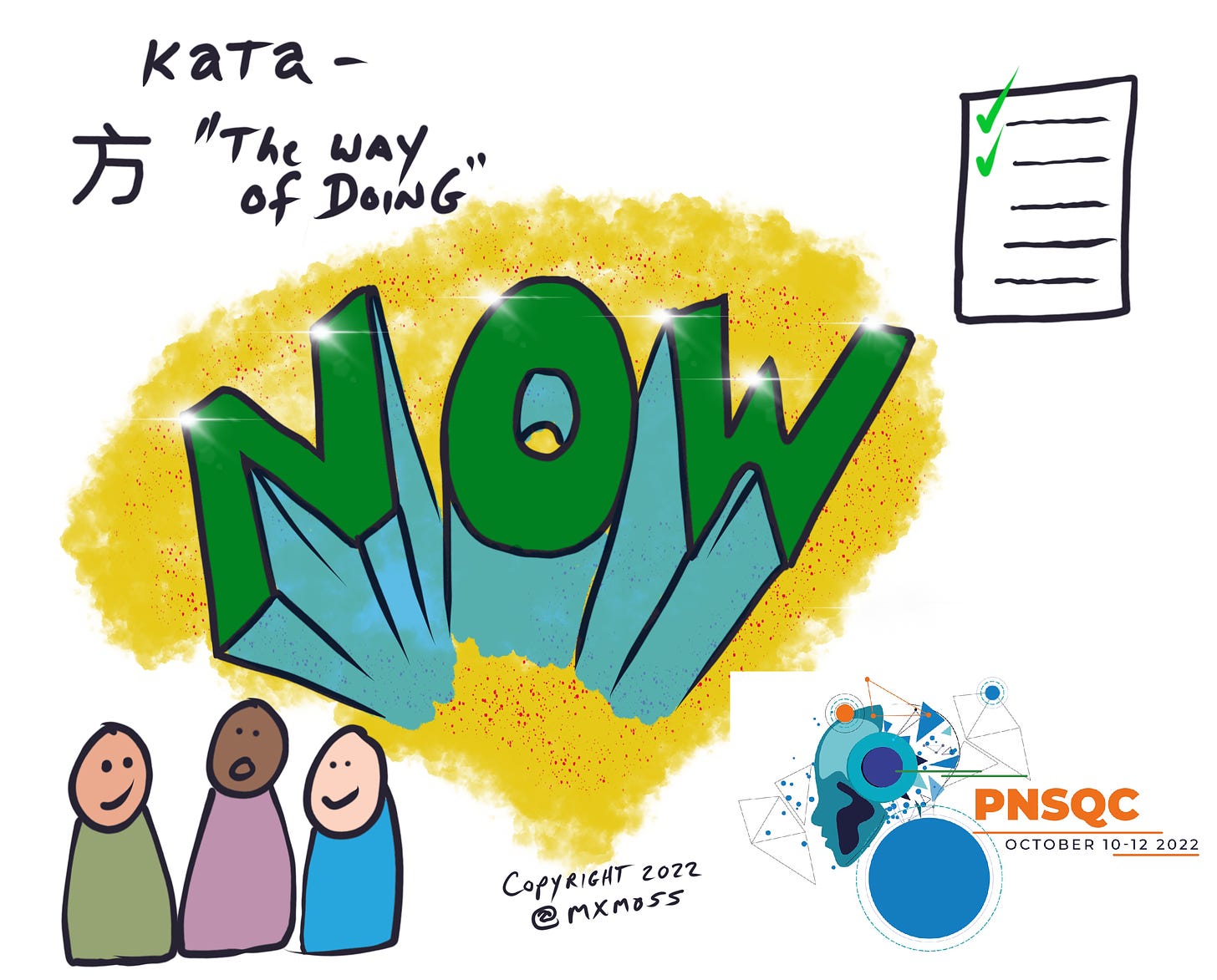Becoming a More Creative Engineer Part 1 talked about why we, as engineers, should practice becoming more creative. Now let’s talk about how to do that.
How?
Normally we think of engineers as using convergent thinking. That is: bringing together all the facts and then synthesizing a solution to the problem. This is a good method, but it may not fully stretch the boundaries of creative thinking. While convergent thinking uses logic, there are other methods to be more creative while problem solving.
Lateral thinking - thinking wider
Conventional vertical thinking often inhibits our ability to solve problems and come up with new ideas. He then shows that lateral thinking is a far easier and more natural way to generate simple, sound and effective ideas
Edward deBono has a method called “Six Thinking Hats” that provides ways of Looking at a Decisions from different perspectives
Conductor's Hat - the manager, controlling
Creative Hat - exploring possible solutions
Hat for the Heart - emotional response
Optimist's Hat - accentuate the positive
Judge's Hat - assessing risks & what can go wrong
Factual Hat - look at the facts & what data is missing
You can additionally work this way by literally expanding your audience
Have you heard of “Explain to a duck”? This works for answering questions like
Does the UI make sense?
Is the documentation correct, engaging and sufficient?
What am I missing? Explain to a duck
Take this and expand your audiences even wider:
Explain to a SME
Explain to another team member
Explain to your parents - or someone who will question all your assumptions
This leads to lateral thinking, but it also helps with empathy.
You can get in touch with how other people think about your software. Later, as you’re developing or testing, tap into the person’s input (persona) to answer what they would do in such a case.
Personal activities - widen your vision
Subscribe to newsletters or mailing lists that aren’t directly relevant to your job - something that interests you but you have no idea about
Try temporarily swapping roles with someone on the team (or pairing, in swapped roles)
Put together a public talk
Read as widely as possible
Volunteer for a position unrelated to your expertise
Divergent thinking - leaps of thought
There are four general guidelines for supporting divergent thinking:
Deferring judgment (this includes both criticism and praise)
Encouraging the numbers—collecting every possible idea
Supporting the strange—striving for the unusual and encouraging different perspectives
Looking for combinations of ideas that might work together; i.e., building off the ideas of others
Creating arbitrary constraints is one way to spur divergent thinking. For example:
Today, try testing your system without an internet connection internet
Tomorrow, use only the keyboard, no mouse or other pointing systems
What if you could ask only 1 things of your customers? What would it be?
Create a list of constraints.
I like to have a (ridiculous) framework for divergence
Inside, outside, upside down
Something old, something new, something borrowed, something blue
Practice translation
“Musicians do not record nature's sounds; they translate feelings about nature into musical notes. Likewise, visual artists do not mimic reality but translate it into a visual vocabulary.” — Kevin Macpherson, Landscape Painting Inside and Out
As a knowledge worker, you are translating real world systems into models. This is a creative activity. There are ways to practice these skills.
Team activities:
Share some brain teasers
Practice seemingly simple exercises and push them as far as possible
Test a button
Test a Triangle
Come up with as many different uses for the humble paper clip as they can in a short amount of time.
Organize practice sessions that are also productive: What 3 questions would you ask your users that are the most valuable? (3 Question Mingle)
Enhancements to Creativity
Take breaks
Leave slack time
Get exercise
Get enough sleep
Giving your brain time to wander will let System 2 go to work.
A short story about System 2. Several years ago I had just bought a new laptop and finished and it took nearly the whole day to install everything and configure it the way I wanted. I took the laptop upstairs to the office before going to bed and I dropped it! Luckily nothing broke, but one of the keys flew off the keyboard. I tried to push it back on, but the little structure for holding the keys baffled me. I couldn’t get it fixed. Giving up, I went to bed.
The next morning I woke up with the answer of how to reattach the broken key at the forefront of my mind. Evidently, during the night, my System 2 brain had been working on solving the problem of reattaching the key. It’s true that sleep and slack time will help solve the problems while your System 1 mind is at rest or distracted.
Bottom Line
What do all these things have in common with what we think of as creative? Same as creating a painting, writing a book, composing a song, -- the thing exists outside of your head.
Being creative means finding as many ways as possible to get the problem out of your head and into a shared space. Iteration will help refine ideas, letting your system 2 take over as you sleep. As you share, you will be challenged and inspired to tweak it, adjust it, refine or go off onto a new tangent.
Creativity doesn’t happen in a vacuum. We all build off the experiences of others.
When?
Don’t wait for inspiration. As Elvis says, work at what you do, and look for “moments of inspiration that visit you unexpectedly.” You can create more of these moments by practicing creativity with your team.
Make a checklist of goals for creativity. Practice being creative with various kata. Discuss with your team or colleagues how to start stretching your creative muscles today. As a personal goal, consider pitching an idea to a conference or a local meetup.
Remember: The key to creativity is getting it out of your head and into a shared space. Then you can quickly iterate on that idea with others to go places you would not have thought of by yourself.
